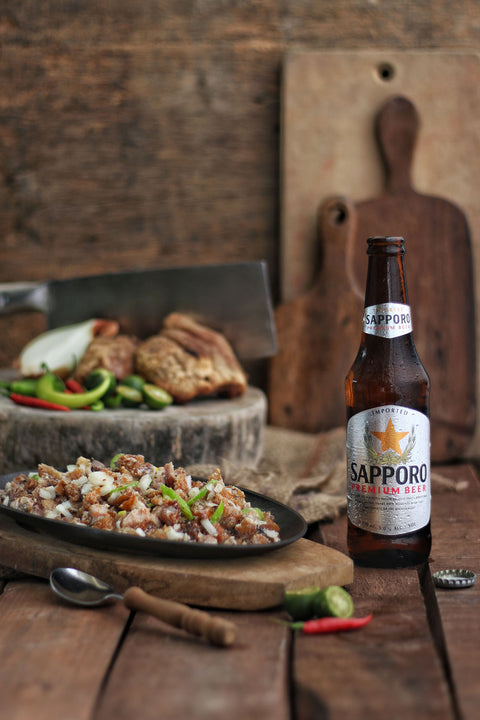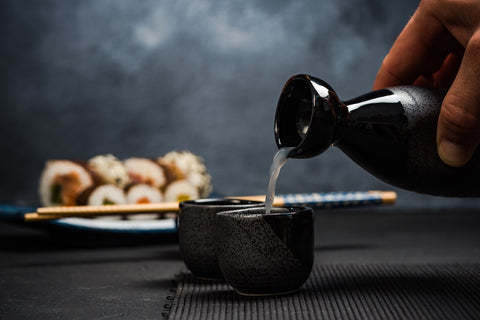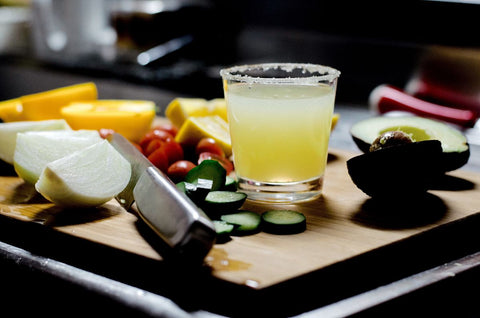What are the key differences of Japanese beer?
- Has a lighter flavor
- Modeled on European styles
- Comes in three categories
- Some beers use seasonal and local ingredients
Beer (ビール, pronounced bīru) is one of the most popular alcoholic beverages in Japan, and one of the most widely consumed beverages in the country — so it’s no wonder that beer brands like Sapporo and Asahi dominate the market. Their drink’s popularity is so widespread that imported Japanese beers are prominent even in other countries, like the Philippines.
But what makes this kind of beer so special? Why do we love having these drinks at izakayas, bars, restaurants, and even at home? In this article, we cover all the key differences of Japanese beer and how it sets them apart from others on the market.
Has a lighter flavor

If you’ve ever tried Japanese beer before, you may have noticed that it tasted noticeably lighter and fresher than most beers you’ve had before. Though beers around the world are made more or less with the same ingredients — water, hops, yeast, and grains — Japanese beer is unique in this regard.
Many (but not all) Japanese breweries add rice to their beer recipes. In many cases, rice is used in substitution for grain, which means they tend to have lower malt content. This creates their lighter profile.
Further, most breweries crafted their recipes to go with the Japanese palate, and to go well with popular Japanese dishes. Their cuisine features many deep-fried, umami-packed, and simmered dishes. As a result, their beers tended to fall under the pale lager category and featured refreshing flavors to pair well with many dishes — such as Sapporo’s premium beer.
Modeled on European styles
Japanese beer was first made using traditional European brewing practices. As such, older breweries’ styles were fairly similar to their European counterparts. In recent decades, they moved past that and aimed for a more refined and balanced version of traditional recipes.
One thing that Japanese beer makers did not change is the precision and control of their brewing practices. The quality of their beers is near flawless — particularly from the main producers like Kirin, Sapporo, and Suntory. You can expect the flavors and character of Japanese beer to stay consistent. What beers you crack open today will taste the same next time and the time after that.
Comes in three categories

Alcohol laws are very different in Japan. They dictate that their beer be taxed based on how high its malt content is. Thus, the use of rice grains and other techniques to lower the malt content in their beer products.
Using malt content as a guide, Japanese beer can be categorized into four types:
- Beer — Regularly made, and has the highest malt content out of the four types. These include beers like Sapporo Premium Black. They typically cost more due to the higher taxation rates.
- Happoshu — Its name means "sparkling alcohol." It has a similar alcohol content as regular beer but contains less malt, which gives it a slightly less toasty and lighter flavor.
- New Genre (shin janru) — also known as the "third beer" (第三 の ビ ー ル, pronounced daisan no bīru). It is one of the newer developments in the Japanese industry. This was formulated to counter tax changes regarding malt content. Technically, it is not a “real” beer, as it contains no malt. Instead, it is made with soy, wheat, and pea spirits.
- Craft Beer — also called “local beer” (地ビール, pronounced ji-bīru). This type was first made in the 1990s when the government enabled small-scale breweries to be set up and licensed.
Unless you can read Japanese, there are a few ways to tell the difference between different beer types. In a supermarket, usually, there is a sign that reads ビール to indicate regular beer offers.
Some beers use seasonal and local ingredients

Many breweries — especially smaller ones — offer beers made seasonally. In the fall, you might see options made with higher alcohol content, for example. These seasonal beers are typically packaged in specially designed cans to designate their seasonality.
Brewers also craft beers using local ingredients in the region they are established in. The use of local ingredients is very popular, as they make these beers unique to the area and inimitable by other competitors.
For example, Sapporo offers a special beer called Sapporo Classic. This was carefully formulated to complement the cuisine of its home prefecture, Hokkaido — where one of the first Japanese breweries was founded. This special offering can only be found and bought in Hokkaido.
Another great beer that uses local ingredients is Hakkaisan’s Rydeen beer. It’s made only from the famous water of Minami Uonuma, the water of Japanese God Raiden — the namesake of this beverage. Each style of beer under this label also has distinct characteristics that match different seasons. For example, the Rydeen IPAs offer fresh and plump flavors of citrus and floral tones, which is perfect for summer.
Key Takeaway
Japanese bīru — one of the most widely enjoyed and loved drinks in the world — stands out from the rest because of their unique brewing methods and ingredients. The differences of Japanese beer make them especially light and refreshing beverages when compared to those from other regions.
If you’re interested in trying out some of the most delicious Japanese beers available in the Philippines, check out a few cans of Sapporo and Rydeen beer from Ralph’s Wines & Spirits! We offer hassle-free online shopping and deliver right to your doorstep, anywhere in Metro Manila — so order today!



